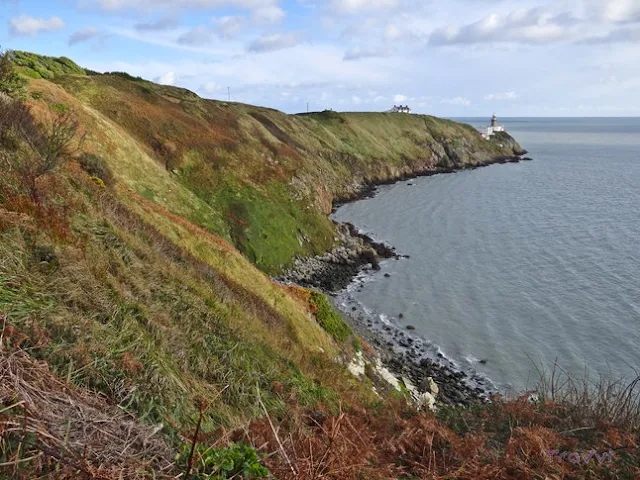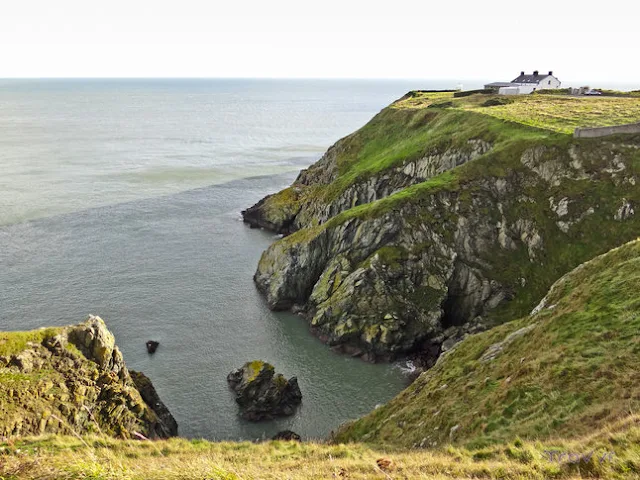Ireland, Leinster, town Howth, The suburb of Howth (Irish Baily, small town) is located in the northeast of Dublin. Baily Lighthouse is located in the southeast of Howte Head in the Irish Sea, a lighthouse on the southeastern part of Howth Head (Irish Sea) in Dublin, Ireland.
 |
| Baily Lighthouse |
The first lighthouse on this site was built in about 1667 by Sir Robert Reading and was one of six that Reading had received letters patent to build from Charles II in 1665. The original facility consisted of a small cottage and a square tower which supported a coal-fired beacon. Parts of the original buildings remain. In 1790, the coal beacon was replaced with a set of six Argand oil lamps, each including a silvered copper parabolic and a bulls-eye glass pane. During this period, the lighthouse was maintained by the Revenue Commissioners.
 |
| Baily Lighthouse |
In 1810, the Corporation for Preserving and Improving the Port of Dublin took over the operations. The original building’s location was high on the headland, so the light was often obscured by fog. On December 5, 1811, a recommendation was issued that the lighthouse be moved south on the headland to Little Baily or Dungriffen. A new tower and house for the keeper, designed by George Halpin Senior, the corporation’s Inspector of Works, was completed on March 17, 1814. The top of the tower stood 134 feet (41 m) above the sea, and the fixed white catoptric light was provided by a set of 24 Argand lamps and reflectors.
 |
| Baily Lighthouse |
The area was the scene of several shipwrecks. On August 3, 1846, the City of Dublin Steam Packet Company’s paddle steamer Prince ran into the cliffs about 2½ km north of Baily in heavy fog, and as a result, it was decided that fog bells should be installed at the lighthouse. This work was delayed due to the costs of other construction projects.
The most notable wreck was the tragedy of the PS Queen Victoria on February 15, 1853, in which over 80 passengers and crew died. The fog bell was finally installed in April 1853, as a result of the Queen Victoria shipwreck and its subsequent Board of Trade inquiry.
 |
| Baily Lighthouse |
Improvements
An air horn was installed in 1871 for times of fog, which was replaced with a siren in 1879. The bell was kept as a standby system until 1890. The siren was replaced by a diaphone in 1926.
 |
| Baily Lighthouse |
Operations in modern times
Modern technology made light a secondary warning system, and a radio beacon became the primary method of warning ships. Starting in 1978, the light was operated only in poor visibility, along with the fog signal. The fog signal was finally discontinued in 1995.
 |
| Baily Lighthouse |
